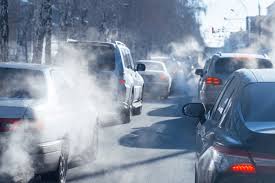Pollution Levels Spike Across Bihar, Delayed Winter Adds to Concerns

Patna: Air quality in several districts of Bihar has deteriorated significantly, with rising dust particles and increased humidity contributing to the problem. In the past 24 hours, Siwan recorded the state’s highest Air Quality Index (AQI) at 296, indicating ‘poor’ air quality. Other cities, including Patna (209), Muzaffarpur (208), Buxar (203), Gaya (155), and Bihar Sharif (153), also registered concerning AQI levels.
According to environmental experts, the high humidity levels in the air, combined with dust particles, have worsened the overall air quality, posing health risks to residents.
Despite the pollution, the weather is expected to remain normal across Bihar today, with the day bringing humid heat. According to the Meteorological Center, nighttime temperatures in the state will be 3 to 4 degrees Celsius higher than the seasonal average over the next 48 hours. Though easterly winds are blowing, their low speed has contributed to increased humidity, resulting in foggy mornings in many areas.
A shift in the wind direction is expected starting November 13, which could bring a drop in both maximum and minimum temperatures, signaling a change in weather patterns.
For the first time in five years, Bihar has not experienced the onset of cold temperatures by the second week of November. Typically, the cold begins to set in after Diwali and Chhath Puja, but this year, temperatures remain higher than normal.
According to the India Meteorological Department (IMD), the effects of ‘La Niña’ could lead to a harsher winter across the country this year. However, Bihar has yet to experience any significant cold spells. The lack of cold winds from the northwest and the absence of snowfall in northern mountainous regions have contributed to the delayed winter. IMD forecasts that ‘La Niña’ will likely become active in India by late November or early December, resulting in a severe cold wave from December to February.
In the last 24 hours, Rohtas and Sitamarhi emerged as the hottest districts, with maximum temperatures recorded at 33.6°C and 33.5°C, respectively. On the other hand, Motihari, Kishanganj, and Valmiki Nagar saw the lowest minimum temperature of 20°C.
As the pollution levels remain high and the onset of cold is delayed, health experts advise residents to take precautions, especially those with respiratory conditions.





